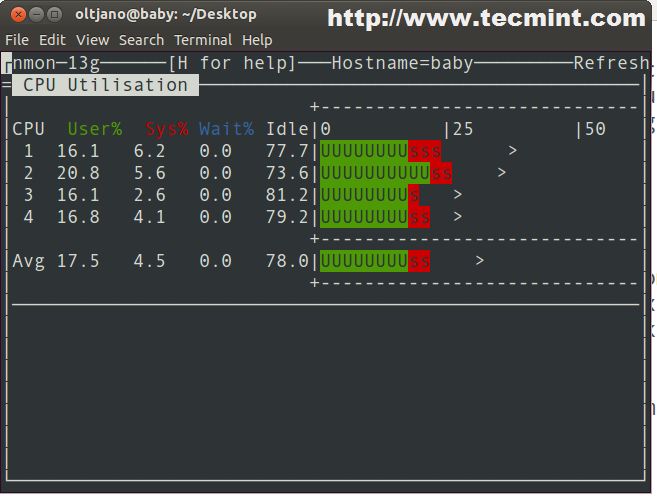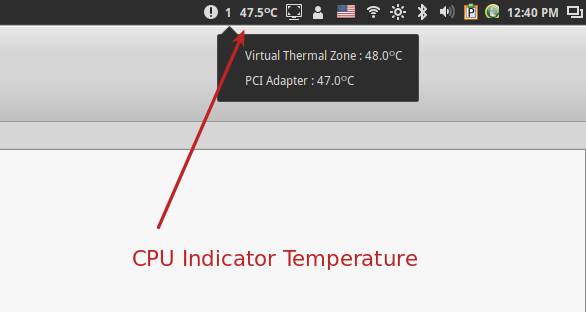

Setting up Psensor to detect your computer's hardware is done the same way as Xsensors, by installing lm-sensors to detect your computer's hardware sensors.

You can right-click the thermometer icon at any time to display the hardware temperatures. Psensor is smaller and more unobtrusive than XSensors and it displays itself on the desktop as a little thermometer icon in the notification area in the upper right corner of the desktop.

XSensors displays a little bit more specific information than Psensor. The difference between the two applications is in the level of detail of the information that is displayed and how the information is displayed. XSensors and Psensor both monitor the computer's temperature and the fan speeds. It is generally safe and recommended to accept the default answers to all questions, unless you know what you're doing. Then you will get asked a lot of questions about what hardware you want the program to detect. Then detect your computer's hardware sensors by opening the terminal and running the command: sudo sensors-detect
LINUX CPU TEMP MONITOR INSTALL
Open the terminal and type: sudo apt-get install xsensors lm-sensors XSensors reads data from the libsensors library regarding hardware health such as temperature, voltage and fan speed and displays the information in a digital read-out. You can get a very detailed write-up with installation instructions here: Stop cpu from overheating I have it on my new Skylake laptop and the fans NEVER run except when doing Ubuntu 16.04 LTS to 18.04 upgrade. Prior to using it I had all kinds of problems with an IvyBridge laptop overheating all the time. Although highly configurable I've never had to change the configuration settings for a pleasant Out-Of-The-Box experience.

It works with thermald, Intel Powerclamp, Battery vs AC for USB power, etc. tlp works wonders for keeping system under control. 10 seconds later turbo is turned back on and temperatures immediately spike back up to 72☌.Īfter knowing your temperature you probably want to control it better. Then turbo is switched off and temp drops 10☌ to 62☌ with a non-turbo speed of 2600 MHz. The temperature starts at 72☌ with a single CPU running at 100% in turbo mode of 3200 MHz. Within conky the system variable I used to monitor an Ivy Bridge CPU is: $☌ If you don't mind third-party utilities I like to use Conky-a light weight system monitor. For the Skylake i7 6700HQ CPU, I used this temperature for Conky display below. The last temperature is x86_pkg_temp reported at 54.0☌. The temperatures are stored in Celsius with 3 implied decimal places. To see what zones the temperatures are referring to use: $ paste <(cat /sys/class/thermal/thermal_zone*/type) <(cat /sys/class/thermal/thermal_zone*/temp) | column -s $'\t' -t | sed 's/\(.\).$/.\1☌/' If you want to find out the temperature without installing anything, use: $ cat /sys/class/thermal/thermal_zone*/temp To see HDD temperature Install hddtemp sudo apt-get install hddtempĪt the time of writing, all the answers involve use of third-party utilities. Finally to get your CPU temperature type sensors in your terminal. You may also need to run sudo service kmod start Install lm-sensors sudo apt-get install lm-sensorsĪfter installation type the following in terminal sudo sensors-detect


 0 kommentar(er)
0 kommentar(er)
